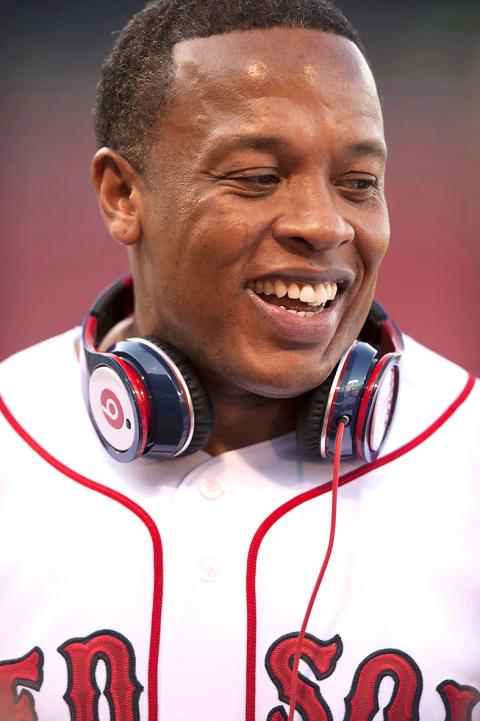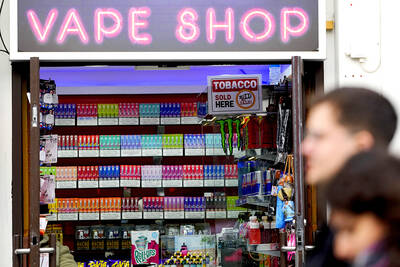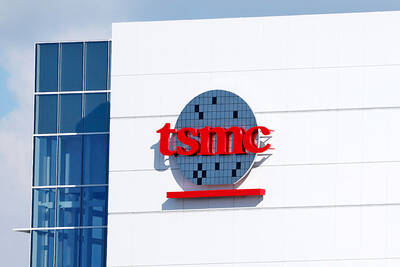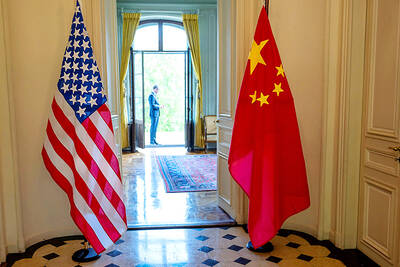It is a long way from the rough streets of south Los Angeles to becoming the world’s richest hip hop star, but that is the path likely set to be taken by Andre Young — better known as Dr Dre — helped by some very cool headphones. The 49-year-old rapper turned producer and entrepreneur would top Forbes’ hip hop rich list after striking a US$3.2 billion deal to sell Apple the company he co-founded eight years ago, Beats Electronics.
The agreement, which has not yet been finalized, would boost his net worth to about US$800 million, according to Forbes. Some reports suggest Dre could soon become the world’s first hip-hop billionaire. He would pip Sean “Diddy” Combs who was the previous top dog with US$700 million, as well as Jay Z, now in third place with US$520 million, followed by Bryan “Birdman” Williams on US$160 million.
“Hip hop is now central to American popular culture,” Robert Thompson, professor of popular culture at Syracuse University in New York state, said after the deal was reported on Friday. “If you get a hip hop artist who can establish a name and a basis of fame and wealth and then they’re smart enough to ... make sorties into other parts of the culture ... that seems a typical American story.”

Photo: EPA
Along the way, Dre has discovered and worked with some of the biggest acts in music, including Eminem, Snoop Dogg, Combs and others and pioneered gangsta rap, as well as west coast G-Funk. He has also won six Grammy awards, including becoming the first hip-hop producer to for Producer of The Year in 2001.
However, it all started in the tough south LA neighborhood of Compton, where he was born Andre Romell Young in February 1965, to parents who divorced while he was barely out of short trousers.
Compton was well-known for gang violence, but also for producing hip hop groups and rappers, including gangsta rap group N.W.A., formed by Young and Ice Cube, making their name with its debut album in 1988 Straight Outta Compton.
The record was criticized for violent language and triggered a warning from the FBI.
His comeback came after releasing his second studio album in 1999, when he was credited with discovering white rapper Eminem.
His 2001 Grammy success propelled him up the financial rankings, as he increasingly moved toward producing and business — co-founding Beats Electronics in 2008 with partner Jimmy Iovine.
The firm makes audio equipment, including the ubiquitous headphones taken up by celebrities and sports stars. In 2012, many were seen at the London Olympic Games.
On Friday, news reports emerged that Apple is preparing a US$3.2 billion buyout of Beats Electronics, in what would be the iconic computer giant’s biggest acquisition yet.
The Financial Times said Apple would buy not only the headphone brand and other sound equipment, but also the firm’s recently launched music streaming service, known as Beats Music.
“If this goes through and Dr Dre moves up the [Forbes] list .. it’s not going to be so much for his hip hop artistry,” Thompson said.
“It’s going to be for branching out into ... the whole Beats thing, because he thought Apple’s headphones were inferior,” he said.
Dre himself appears confident the deal will go through.
In a video posted on YouTube, he brags about the deal with actor Tyrese Gibson, who says Forbes needs to update its hip hop rich list, released only a few weeks ago.
“The first billionaire in hip-hop, right here from the ... West Coast,” he tells the camera.

Real estate agent and property developer JSL Construction & Development Co (愛山林) led the average compensation rankings among companies listed on the Taiwan Stock Exchange (TWSE) last year, while contract chipmaker Taiwan Semiconductor Manufacturing Co (TSMC, 台積電) finished 14th. JSL Construction paid its employees total average compensation of NT$4.78 million (US$159,701), down 13.5 percent from a year earlier, but still ahead of the most profitable listed tech giants, including TSMC, TWSE data showed. Last year, the average compensation (which includes salary, overtime, bonuses and allowances) paid by TSMC rose 21.6 percent to reach about NT$3.33 million, lifting its ranking by 10 notches

Popular vape brands such as Geek Bar might get more expensive in the US — if you can find them at all. Shipments of vapes from China to the US ground to a near halt last month from a year ago, official data showed, hit by US President Donald Trump’s tariffs and a crackdown on unauthorized e-cigarettes in the world’s biggest market for smoking alternatives. That includes Geek Bar, a brand of flavored vapes that is not authorized to sell in the US, but which had been widely available due to porous import controls. One retailer, who asked not to be named, because

SEASONAL WEAKNESS: The combined revenue of the top 10 foundries fell 5.4%, but rush orders and China’s subsidies partially offset slowing demand Taiwan Semiconductor Manufacturing Co (TSMC, 台積電) further solidified its dominance in the global wafer foundry business in the first quarter of this year, remaining far ahead of its closest rival, Samsung Electronics Co, TrendForce Corp (集邦科技) said yesterday. TSMC posted US$25.52 billion in sales in the January-to-March period, down 5 percent from the previous quarter, but its market share rose from 67.1 percent the previous quarter to 67.6 percent, TrendForce said in a report. While smartphone-related wafer shipments declined in the first quarter due to seasonal factors, solid demand for artificial intelligence (AI) and high-performance computing (HPC) devices and urgent TV-related orders

MINERAL DIPLOMACY: The Chinese commerce ministry said it approved applications for the export of rare earths in a move that could help ease US-China trade tensions Chinese Vice Premier He Lifeng (何立峰) is today to meet a US delegation for talks in the UK, Beijing announced on Saturday amid a fragile truce in the trade dispute between the two powers. He is to visit the UK from yesterday to Friday at the invitation of the British government, the Chinese Ministry of Foreign Affairs said in a statement. He and US representatives are to cochair the first meeting of the US-China economic and trade consultation mechanism, it said. US President Donald Trump on Friday announced that a new round of trade talks with China would start in London beginning today,